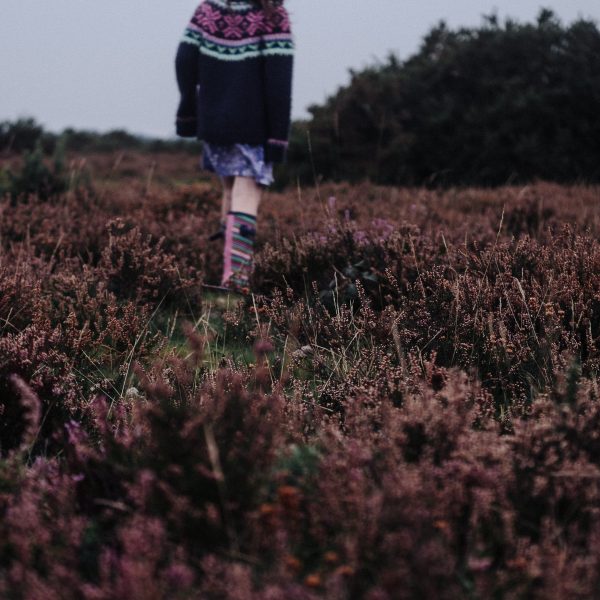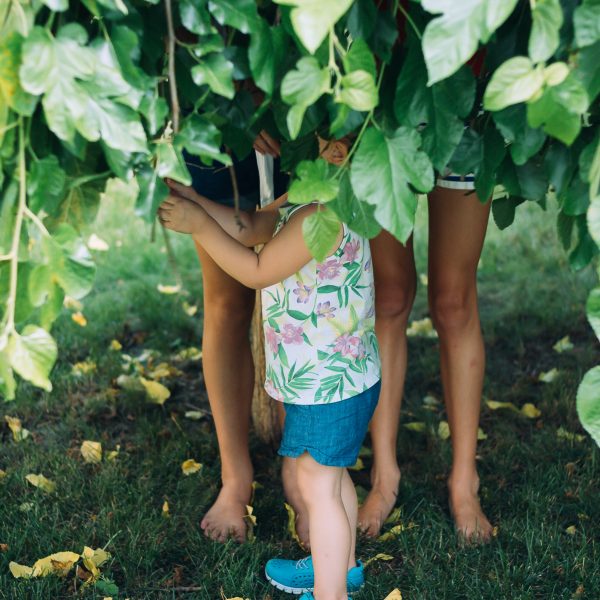An invitation to contextualise wellbeing programs through nature pedagogy
opinion
The views expressed by contributors are their own and not the view of The Sector.

When we think about what helps children to feel a sense of wellbeing whilst in our care, we know that children benefit from consistent routines, warm, familiar adults who express care and comfort, and positive experiences that help children to feel safe and secure in their environment.
The provision of wellbeing programs that help facilitate these positive experiences often focus on a whole service approach. A whole service approach to wellbeing provision is important because it means that environments are inclusive for all children and include consistency and predictability, which is crucial for wellbeing development.
Contextualising wellbeing programs
What is also important however, is understanding the impact that ‘place’ or context has on children’s wellbeing, and therefore, the planning and provision of wellbeing programs. A carefully planned wellbeing curriculum should be individualized and contextualised.
That is, the curriculum is flexible and responsive to the multiple ways that children experience and express wellbeing, and takes into consideration each unique setting or context. This includes aspects of a service such as their philosophy and values, geographic location, and cultural backgrounds of families.
All services are different, and all families are different. Wellbeing programs should incorporate a combination of whole service and contextualised pedagogical approaches that embrace these differences.
Nature Pedagogy and children’s wellbeing
Nature pedagogy is one approach that can support children’s individual wellbeing needs. This is because nature pedagogy involves rich, investigative play in nature, facilitated by skilled educators in the natural environment. It allows educators to really tailor their wellbeing curriculum to suit the constantly changing and evolving needs of young children.
The open-ended materials and learning experiences promoted through nature pedagogy can provide children with the time, space and flexibility to move through their day, investigating and discovering at their own pace.
Nature pedagogy provides unlimited ways for children to think and interact with themselves and the world around them. This in turn can be transformative for children’s sense of wellbeing in the present moment and for the future.
Four strategies to promote children’s wellbeing through a nature pedagogical lens
1. Provide a range of small, medium, and large spaces outdoors
Some children prefer small intimate spaces outdoors because they can be quiet or alone. Other children prefer large open spaces outdoors where they can socialise with larger groups of friends.
As children develop a sense of place within their learning environment, the outdoors provides a landscape that is varied and open ended.
Small spaces can be intimate and nurturing, fulfilling a need for children seeking shelter or solitary play. Larger spaces can be invigorating where children can be exposed to the natural elements such as wind, rain and sunshine.
2. Help children to slow down in nature
It is important not to rush children outdoors. Allow plenty of time for children to explore, investigate and immerse themselves in nature.
Now more than ever, children benefit from having time to go slow, to contemplate and to connect with their surroundings. Nature play is a perfect vehicle for these moments.
Extended periods of time where children can be slow, also support executive brain functioning which develops working memory, critical thinking skills and emotional regulation through natural risk taking in the outdoors.
3. Be flexible with how spaces are used to support children’s wellbeing
Children’s ideas and wellbeing needs are always changing. This means that the strategies and approaches, and ways in which children interact with the natural environment can be different from day to day.
Children also interpret spaces and materials in different ways, depending on a whole range of influences such as home life, relationships with peers and adults, or illness.
Individualising wellbeing programs and experiences means having an open mind about how spaces are used, when they are used and why they are used.
It is also important to challenge any pre-conceived assumptions about the outdoor spaces you might have. Tree branches, steppingstones, rocks and sandpits can be used in so many ways, which is perfect for individualising programs.
4. Draw from nature itself
Contextualising wellbeing programs for children means drawing from the natural surroundings, using what is available, and being mindful of how materials and resources are incorporated into outdoor spaces.
Nature can provide children with the necessary tools for supporting their wellbeing and learning, challenging children who seek engagement in risky play, and deepening a sense of belonging for children wanting grounding or connection.
Observe the different elements of the natural environment, and tailor your wellbeing programs with these elements in mind.
Anna Tibb is the Centre Manager at Isabel Henderson Kindergarten in Fitzroy North, Melbourne. and holds her Dip Ed, B. Ed (EC), Dip Couns, M. Couns, PhD Candidate.
Popular

Quality
Practice
Provider
Workforce
A moment of calm in crisis: What Queensland’s childcare staff taught us about trust, safety and professionalism
2025-08-21 11:48:35
by Fiona Alston

Policy
Provider
Quality
Workforce
National Working with Children Check reforms gain momentum with NSW support
2025-08-18 11:29:45
by Fiona Alston

Workforce
Quality
Practice
Provider
Research
Sesame Lane Kippa-Ring Regency Street: Leading the way with the Curiosity Approach in Queensland
2025-08-14 10:57:33
by Fiona Alston















